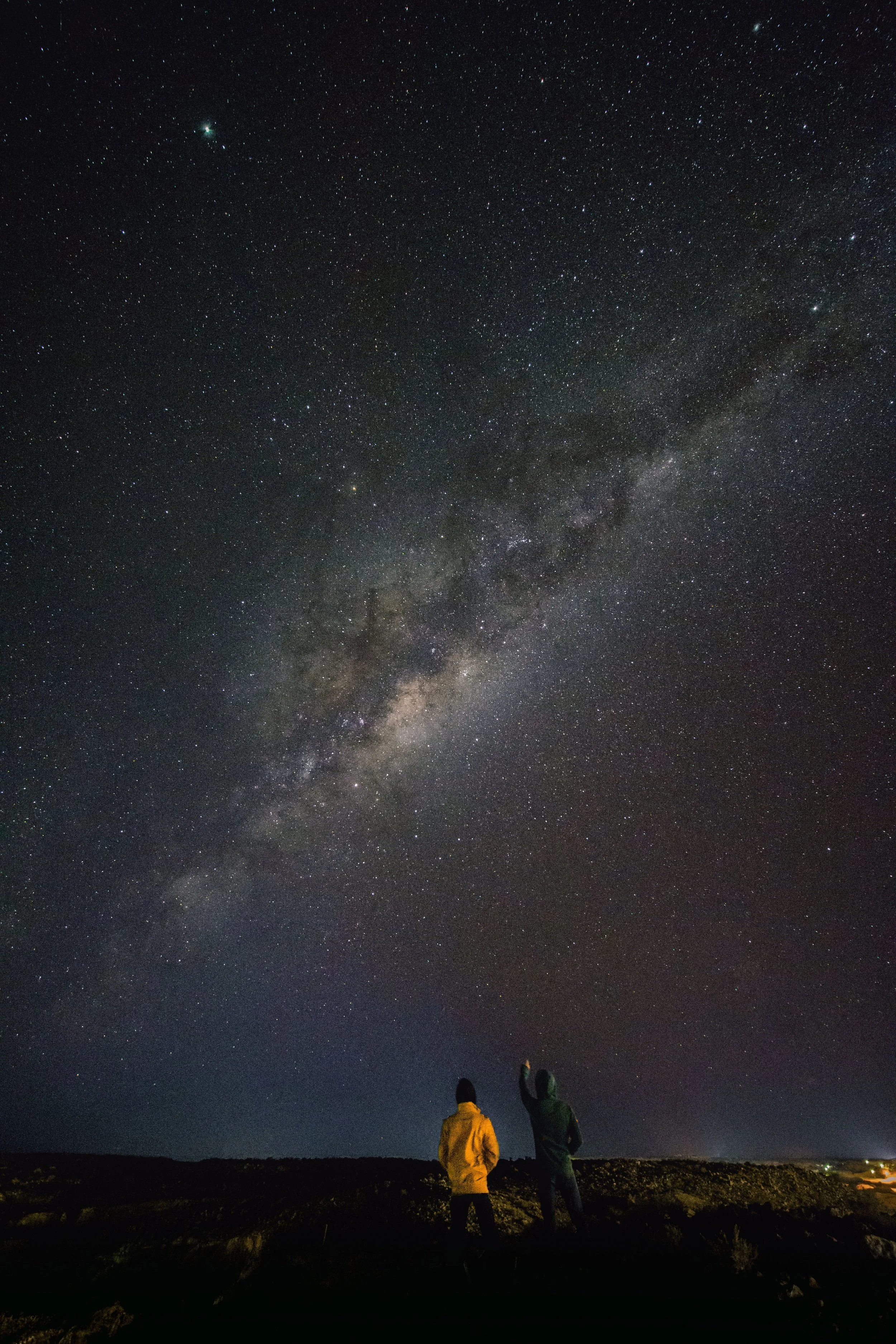This Is Star Stuff
They say we’re wired to look for danger.
This comes from the primitive part of our brain. See danger: Run.
And this world is damn scary.
In Syria and Turkey, over 46,000 people died in the earthquake. And this earthquake devastated an area that was already in humanitarian crisis.
There’s the danger to global population health and health systems from the pandemic. Genocide. Hundreds of years of crimes against black people and related collective trauma.
I don’t begin to know how to take in the pain of all of that.
It doesn’t end there, though. There’s micro danger—scariness on a small scale that touches our day-to-day lives. People in abusive relationships. Those who do not feel safe in their own homes. The food insecure.
Or, even if you have all of that security, even more micro, you can find a thousand messages from a bot in your email. It's feeling like technology is getting smarter than we are. I recently had a bot send a set of TV trays from Wal-Mart to a guy in Seattle using my credit card.
Even micro danger can feel mildly disturbing. It can feel like we are under threat—whether perceived or real.
It’s not surprising that we armor up. We steel ourselves for a fight. Polyvagal theory says we are constantly consciously and involuntarily looking for peril in situations and people.
But the problem with armoring up to shield us against this hazardous world is we can forget we have the armor on. It’s heavy, it weighs us down, and it clanks and chafes. It can be noisy and disruptive enough that other people see it. It stops us from feeling. From taking it in. From being authentic.
While we need to ensure we are safe—that’s part of being human—in general, moving through the world in a blocked-off state doesn’t serve us. Brené Brown says in Dare To Lead that armor is not necessary nor rewarding for most of us in the Western world.
But letting it go is the even scarier part.
When we see what is happening in the world, it is a giant mirror being held up to show us our humanity. It shows us who we are. It shows us ourselves.
What if instead of being wired to look for danger, our species could evolve to see the universe in ourselves and in others? What if we could find ourselves in this incredible expansive universe—10 billion light years in diameter—with its unfathomable number of galaxies. How might we touch that expansiveness of all existing matter and space? How do we absorb that?
Carl Sagan said, "The cosmos is also within us. We're made of star-stuff. We are a way for the Universe to know itself."
Sagan was saying that because people and animals and most other matter on this planet are comprised of carbon, oxygen, and nitrogen. And those very atoms were created in previous generations of stars. Recent images from NASA’s James Webb Space telescope reveal even more about the complex structure of our universe. Scientists are learning more about our galaxies and how stars are born.
Think about when you were born. You always probably thought that your birthday is when your star started. But what if you began long before that? What if threads of you began billions or millions of years ago?
Think about how powerful this long trajectory is.
We are made of star stuff.
In the end, when we get stuck in our own fears, when we hunker down in our own small worlds, we forget our star stuff. We don’t progress. We don’t go anywhere. We don’t move.
To help this crazy world we are in, we need to notice the armor we may have put on. How well-worn is your armor? Who in your life prompts us to put on your suit? Can you take off a piece of it? Maybe the breastplate? A skull helmet? A gauntlet covering one hand?
Or, perhaps we might need to set it all aside, and dive into the vulnerability underneath. This is how we tackle our own inner darkness. Confront our own fears. See our own star stuff. This is the path to inner freedom—and how we move forward through collective darkness.
